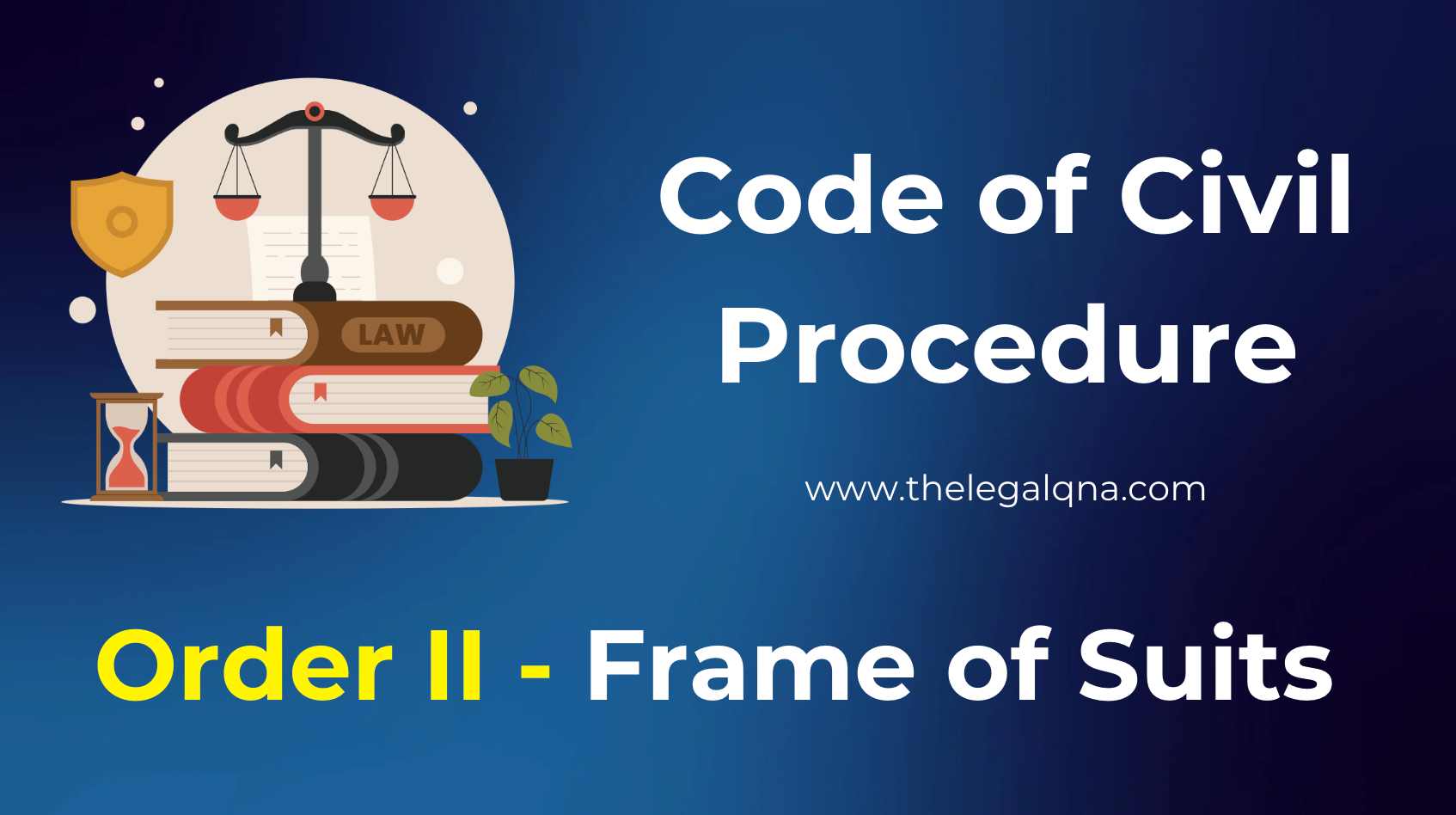Order II in the Code of Civil Procedure (CPC) of India details rules for structuring a lawsuit to include all relevant claims in one suit.
This approach aims to resolve all related disputes together and prevent further lawsuits on the same issues. Below is a simplified breakdown of each rule in Order II.
Provisions in Order II of the CPC
Order II covers essential guidelines for framing a suit, including all claims related to a cause of action, and joining related causes of action within a single suit.
1. Framing a Suit for Final Decision (Rule 1)
Rule 1 specifies that a suit must be framed to allow a complete and final decision on all disputed issues.
When filing, the plaintiff should include every relevant aspect of the dispute in order to reach a comprehensive resolution.
2. Including the Whole Claim (Rule 2)
Rule 2 mandates that a plaintiff should include all claims related to a single cause of action in one suit. Rule 2 consists of three main sub-rules:
- Complete Claim Requirement: The plaintiff must include the entire claim in one suit. If they want to keep the claim within a specific court’s jurisdiction, they may choose to reduce a portion of the claim.
- Relinquishing Part of the Claim: If the plaintiff intentionally leaves out or relinquishes a part of their claim, they cannot later file a suit on that omitted portion.
- Omission of Reliefs: If a plaintiff is eligible for multiple forms of relief from the same cause of action, they should sue for all of them in one suit. If a relief is left out without court permission, the plaintiff cannot file another suit later for the omitted relief.
Example: If a landlord sues a tenant for unpaid rent from one specific year but leaves out previous years’ rent, they cannot file another lawsuit for the rent of those other years.
3. Joinder of Causes of Action (Rule 3)
Rule 3 allows the plaintiff to combine several causes of action (grounds for filing a suit) against the same defendant within a single suit, as long as there is a shared interest in these causes of action.
When multiple causes of action are combined, the court’s jurisdiction depends on the total value of all combined causes at the time of filing.
4. Claims Joined for Recovery of Immovable Property (Rule 4)
This rule restricts the types of claims that can be joined with a suit for the recovery of immovable property. Only certain related claims can be included, such as:
- Claims for arrears of rent or profits connected to the property.
- Claims for damages related to a contract under which the property is held.
- Claims that are based on the same cause of action as the primary suit for property recovery.
Note: In cases related to foreclosure or redemption, a party may request to be given possession of the mortgaged property, even if possession was not part of the original suit.
5. Claims by or Against Executors, Administrators, or Heirs (Rule 5)
Rule 5 states that if a claim involves an executor, administrator, or heir who represents a deceased person’s estate, it should not be joined with a personal claim against them unless the two claims are related to the estate or have a direct connection with the deceased.
6. Court’s Power to Order Separate Trials (Rule 6)
Rule 6 allows the court to order separate trials if combining multiple causes of action within one suit creates complications or delays.
7. Objections Related to Misjoinder (Rule 7)
All objections about misjoinder (wrongly combining causes of action) must be raised as early as possible, typically at the beginning or at the time issues are settled.
If an objection is not raised promptly, it is considered waived and cannot be brought up later in the case.
Practical Examples and Illustrations
- Including Whole Claim: If a plaintiff is owed money for services provided over a year, they must claim the entire amount in one suit rather than filing multiple suits for each month’s payment.
- Misjoinder Objection: If a person combines unrelated claims in one suit, the other party should raise an objection as soon as they recognize the issue; otherwise, they waive the right to object on this basis later.
Verdict
Order II in the CPC sets guidelines to frame a suit in a way that resolves all disputes related to a cause of action in a single case.
By following these rules, plaintiffs and defendants can work within a legal structure that addresses all issues in one proceeding, with no need for further litigation on the same matters.
